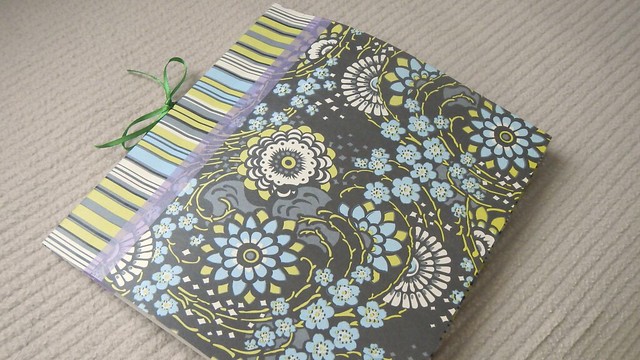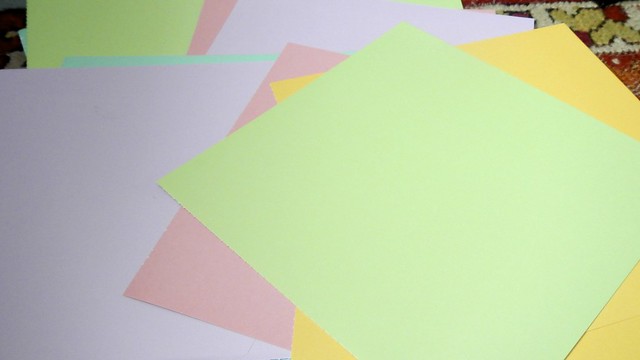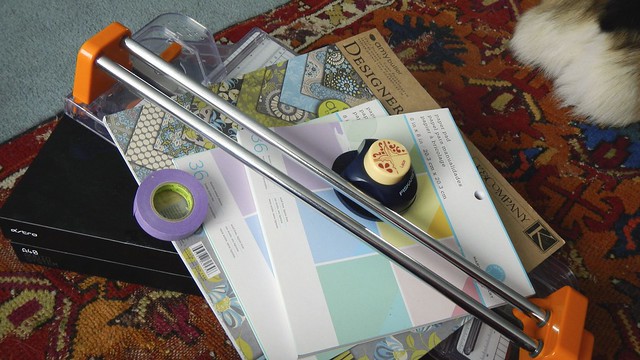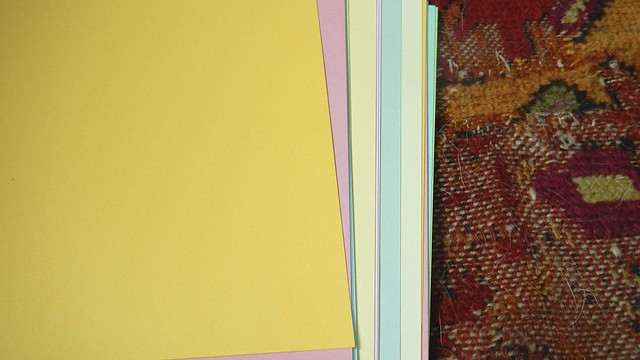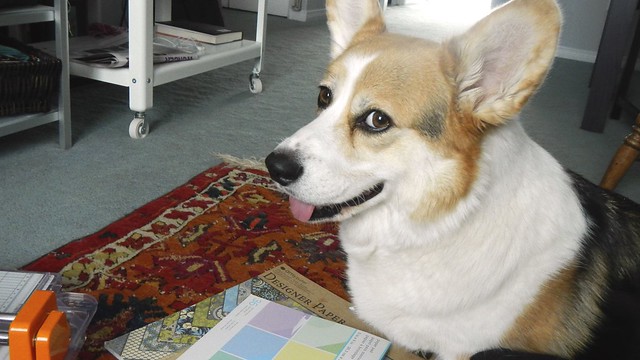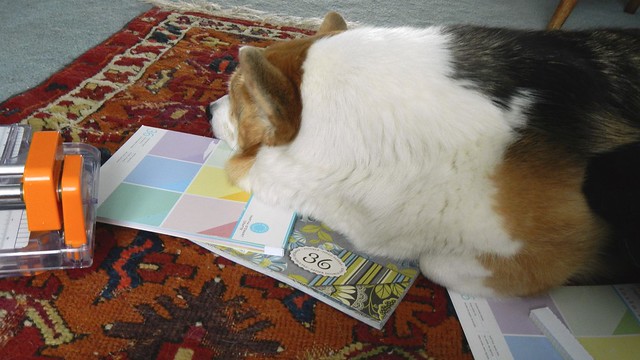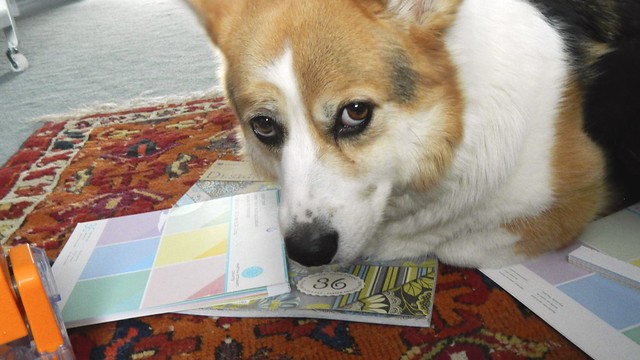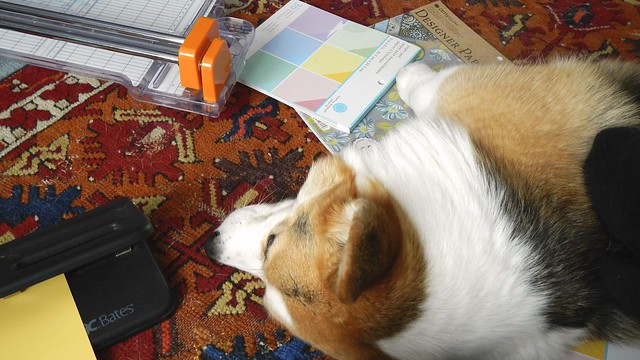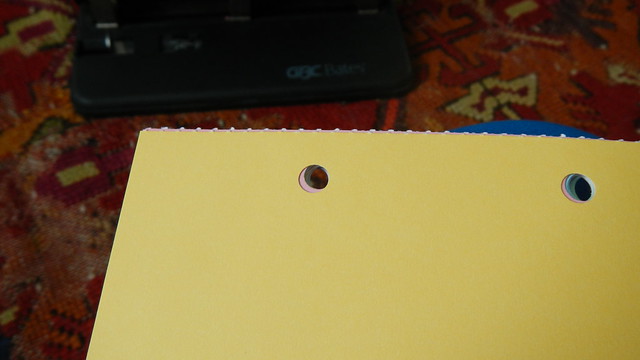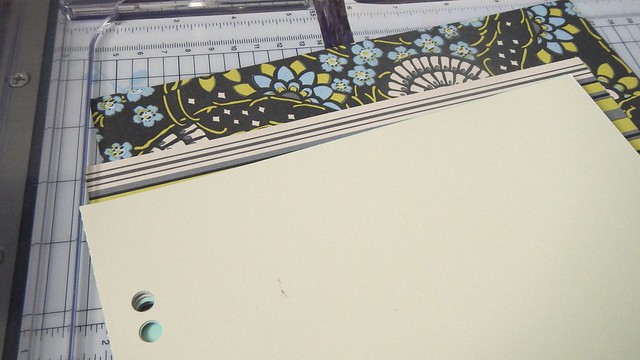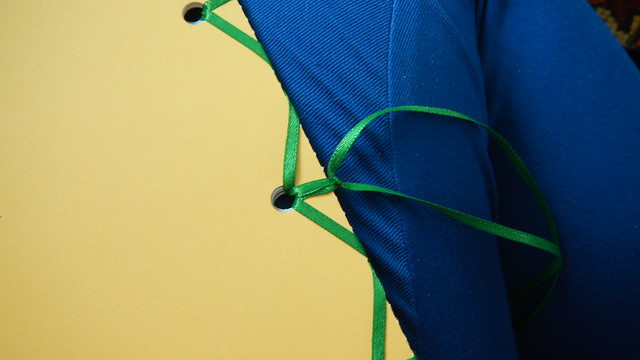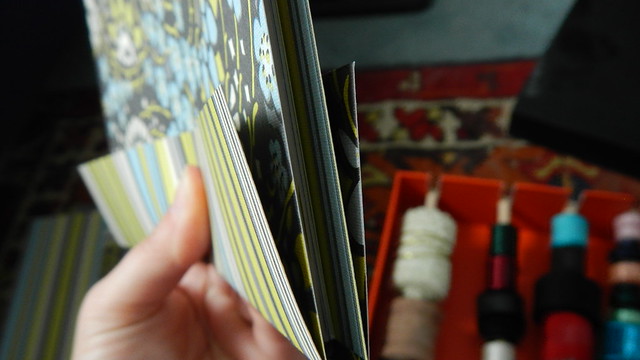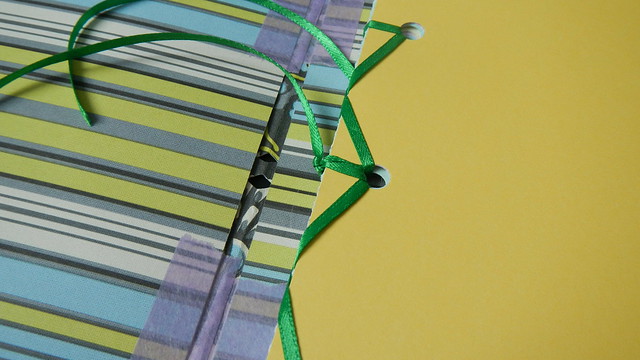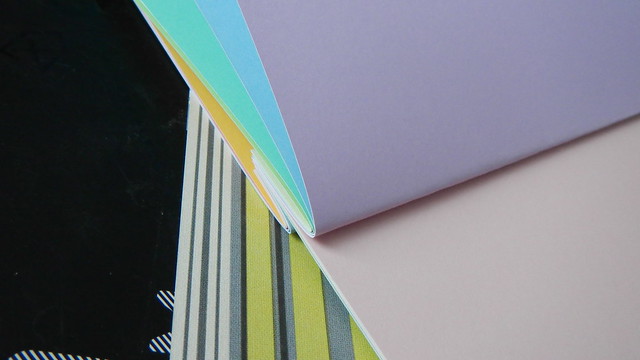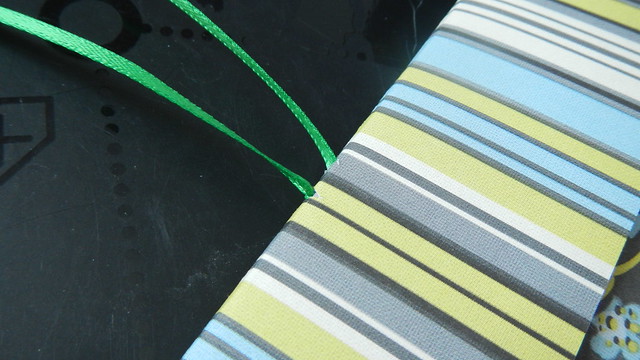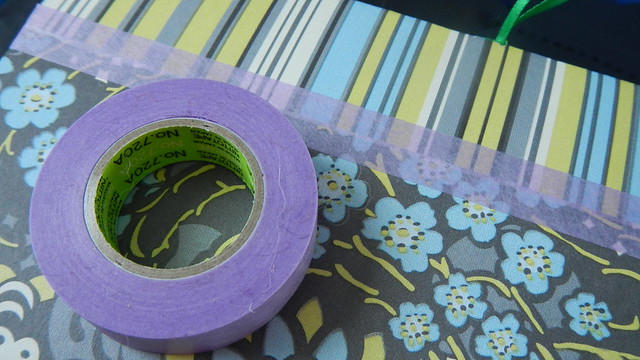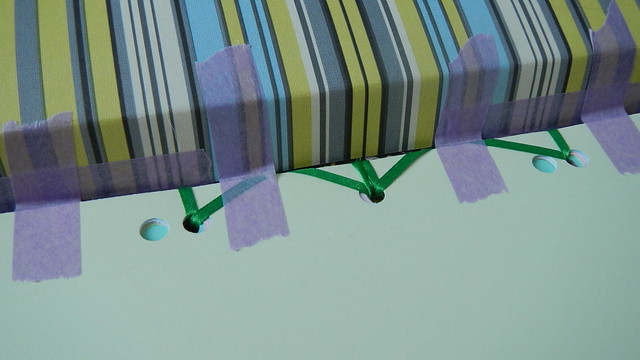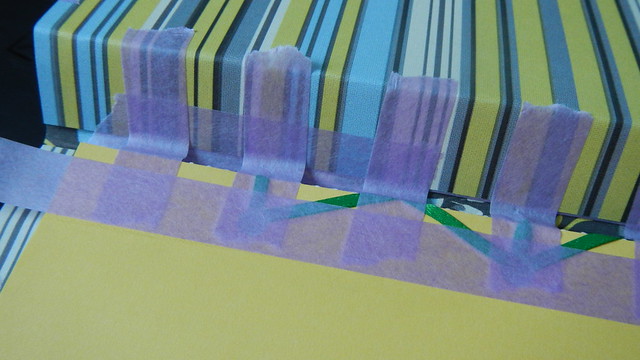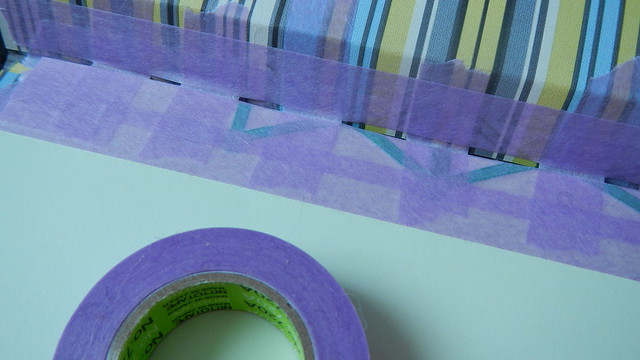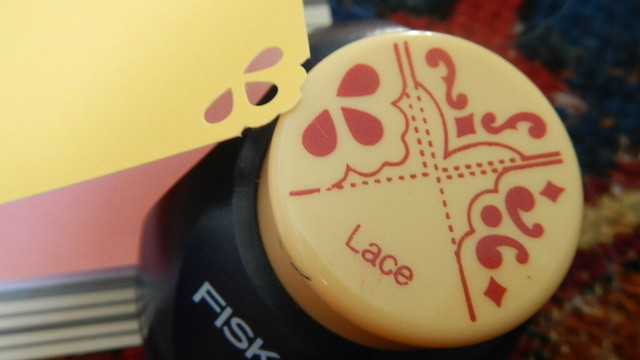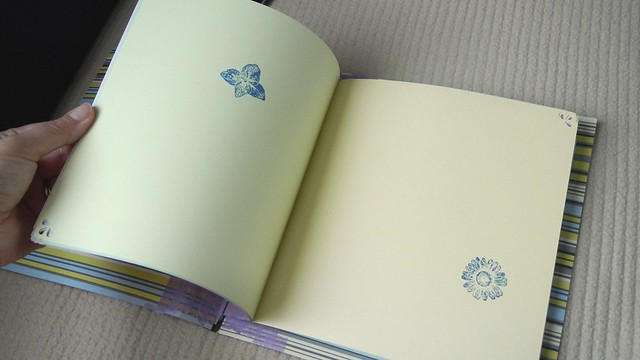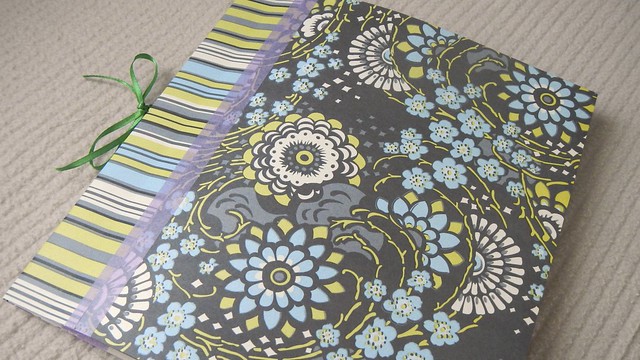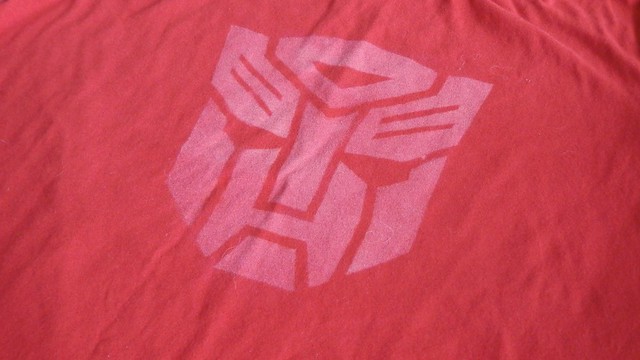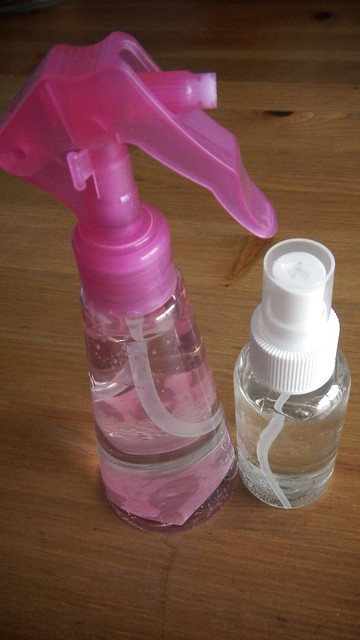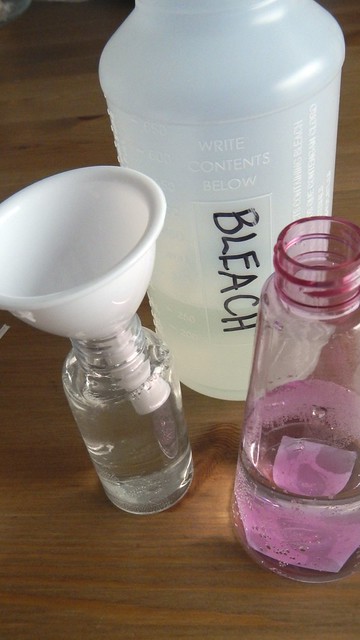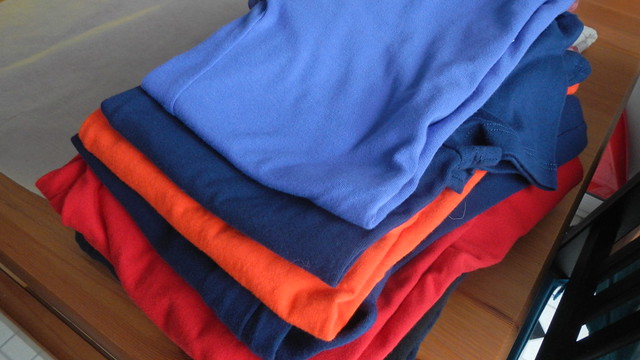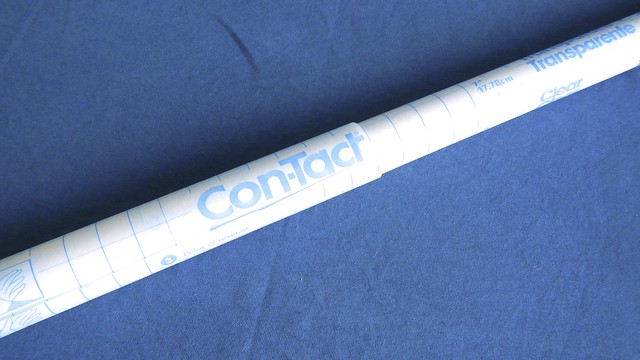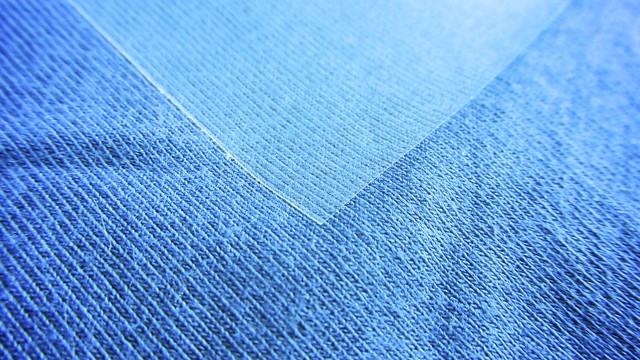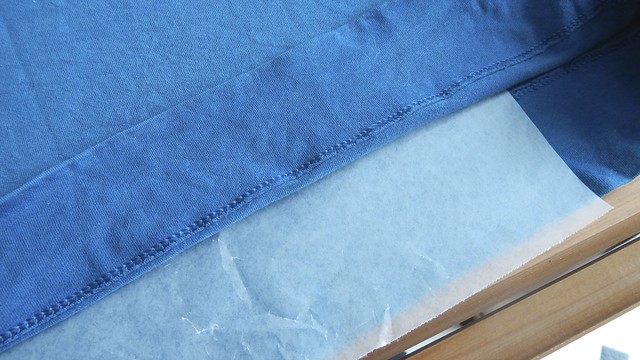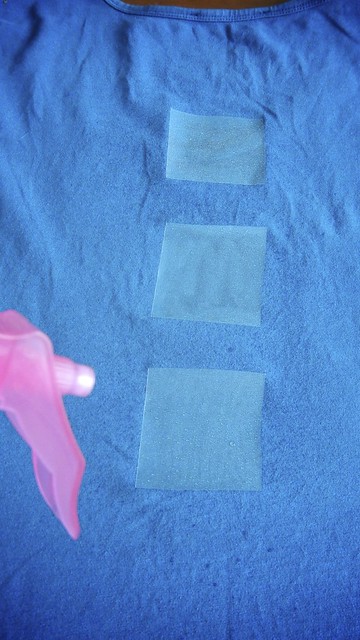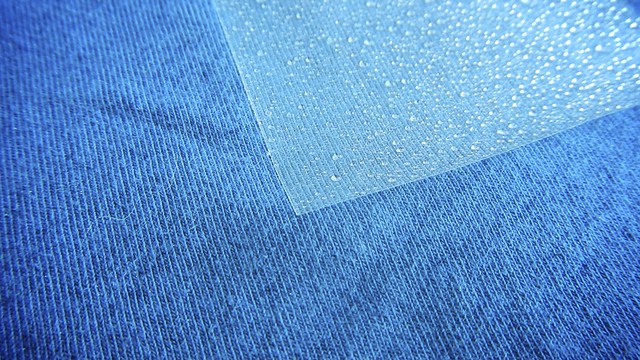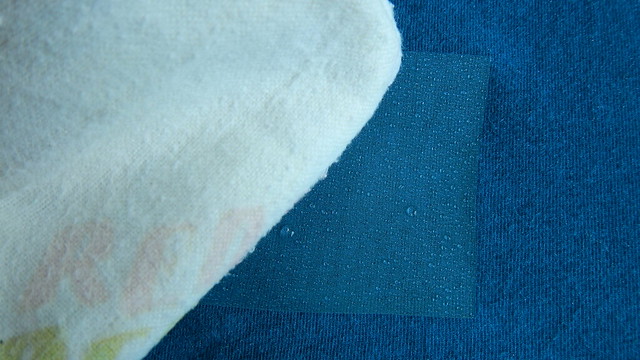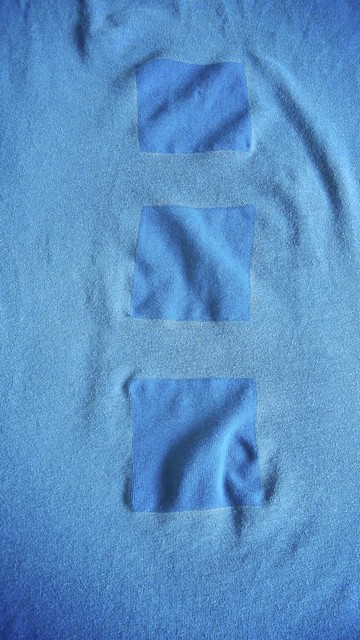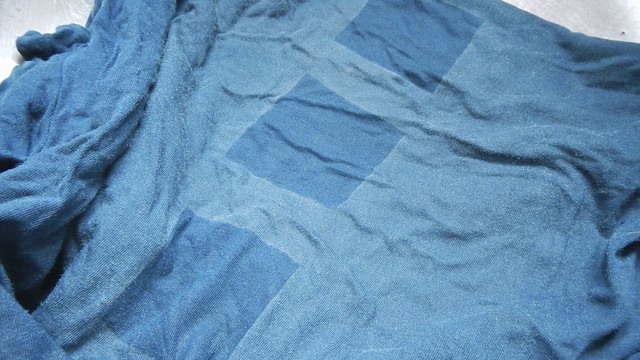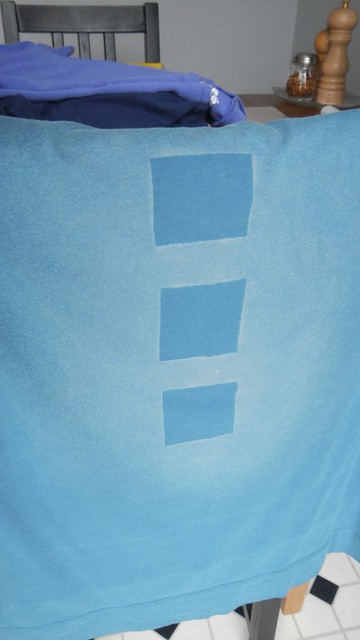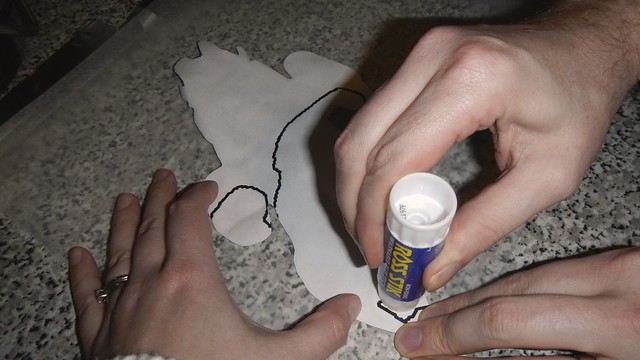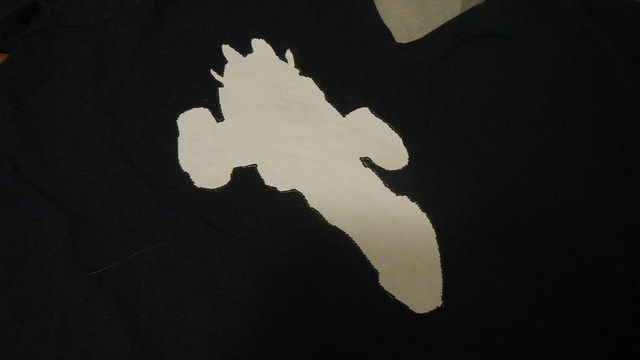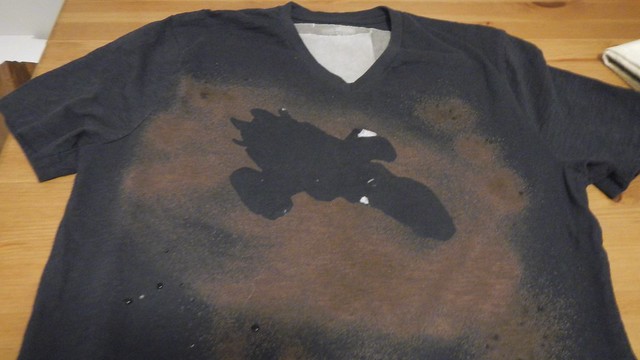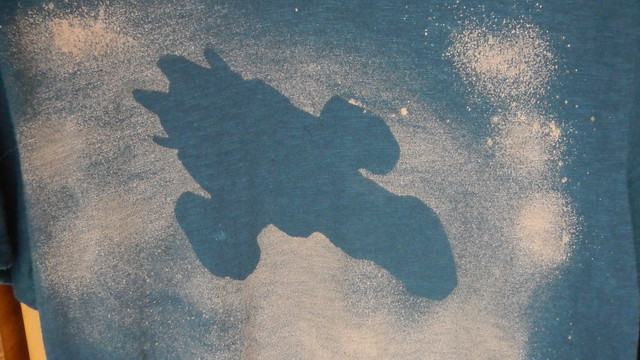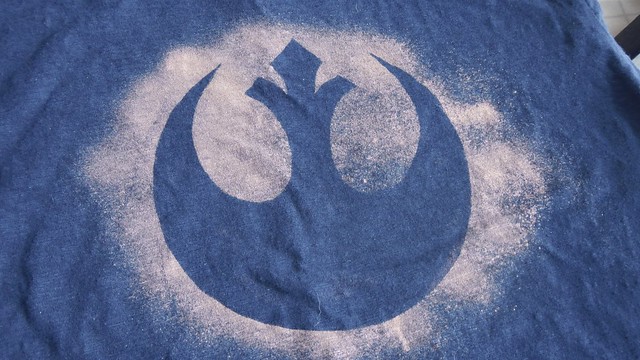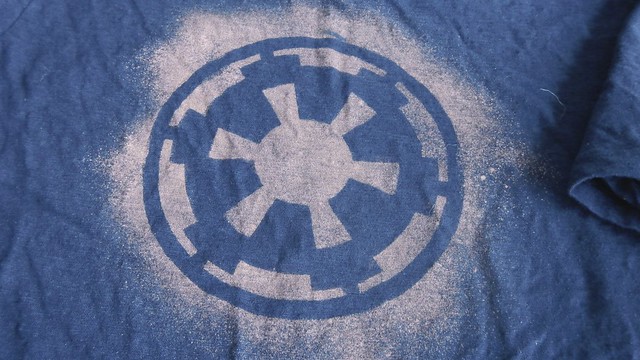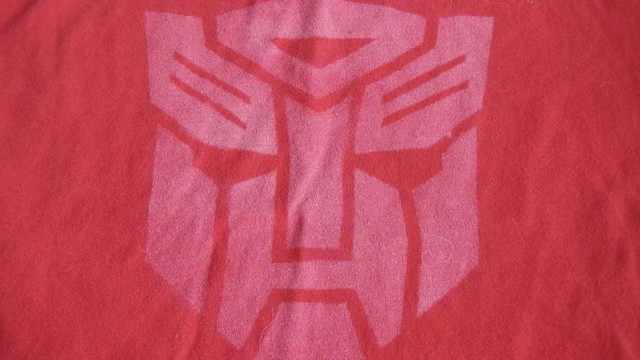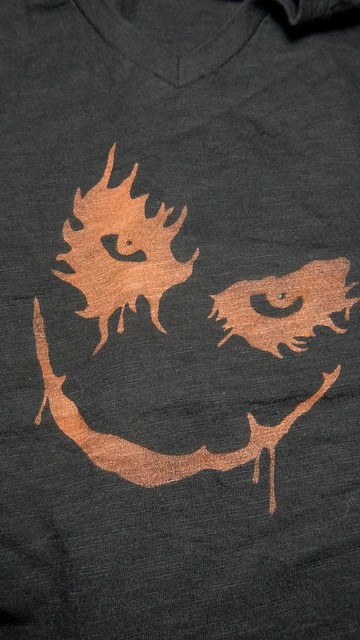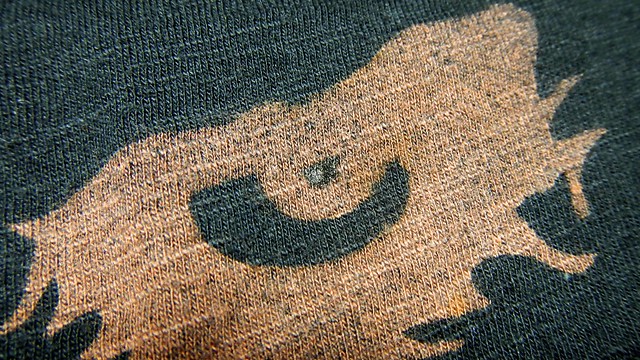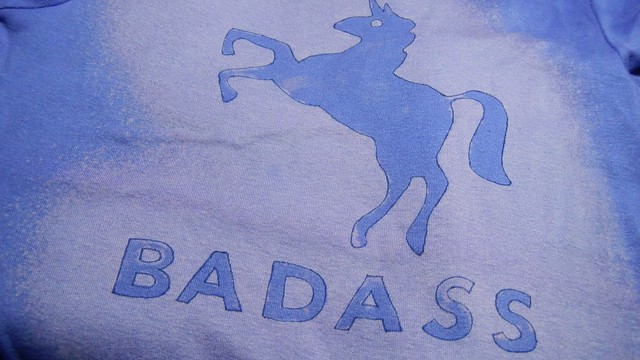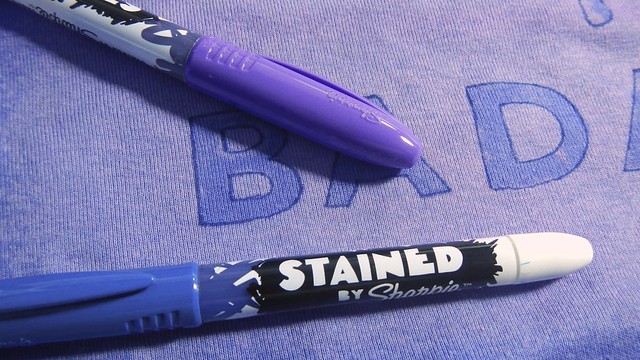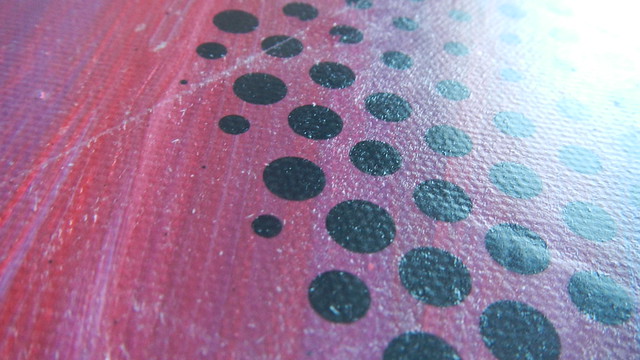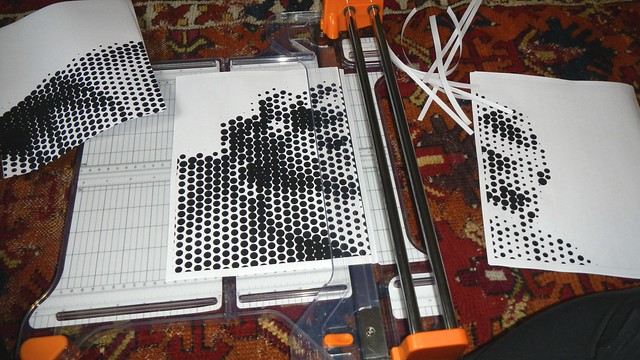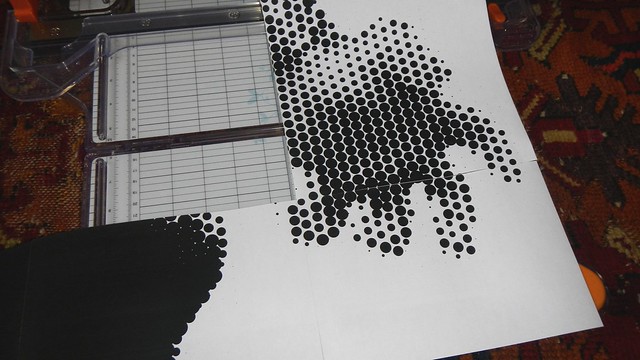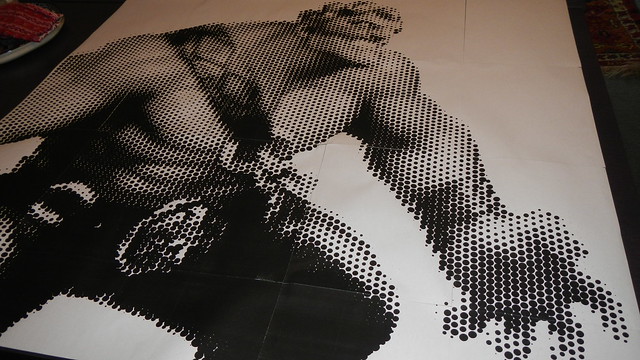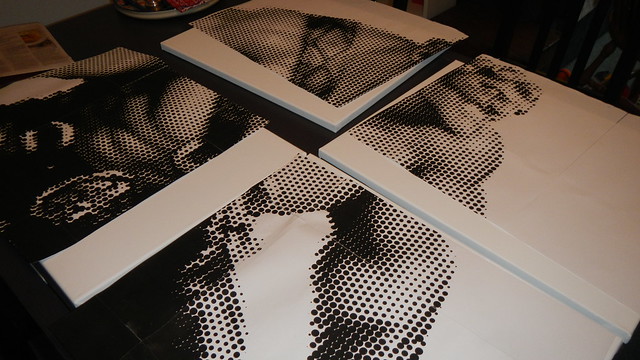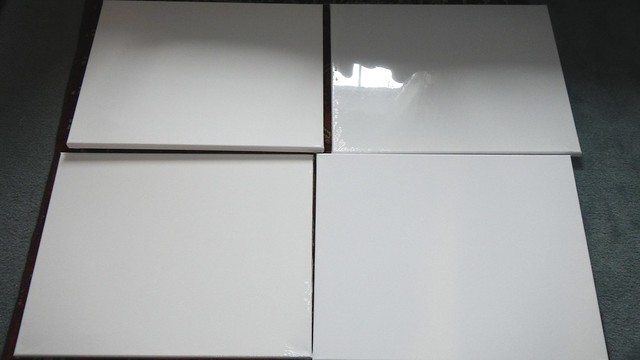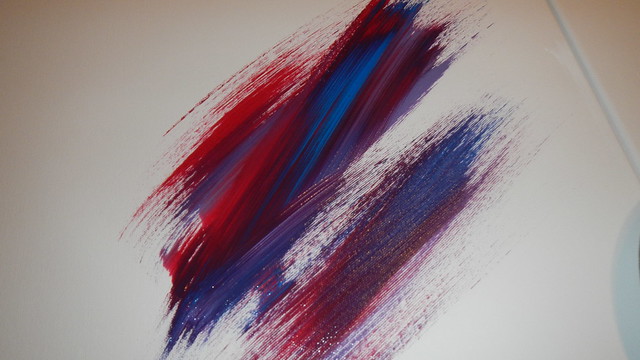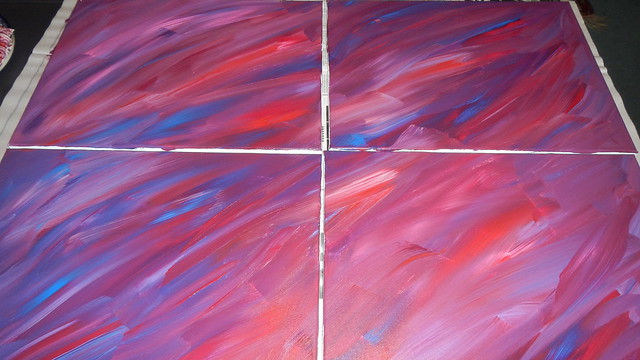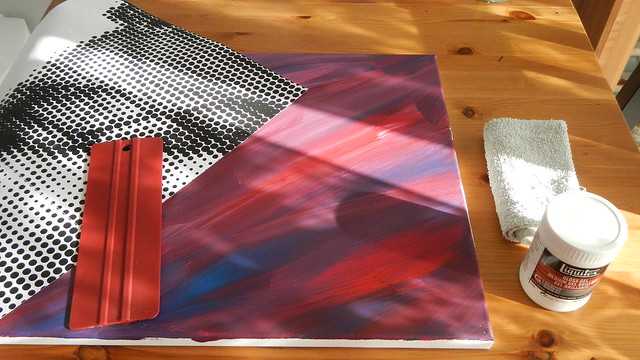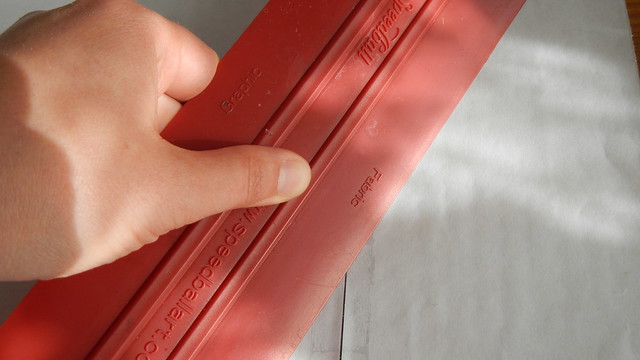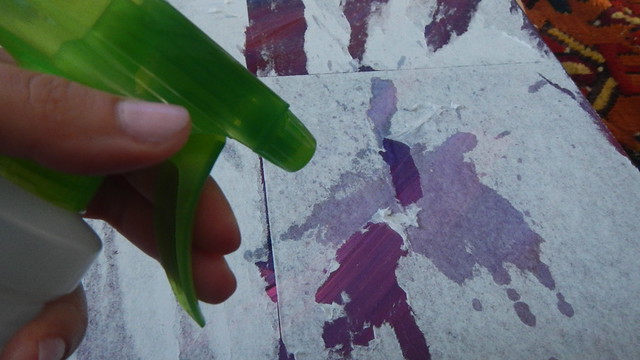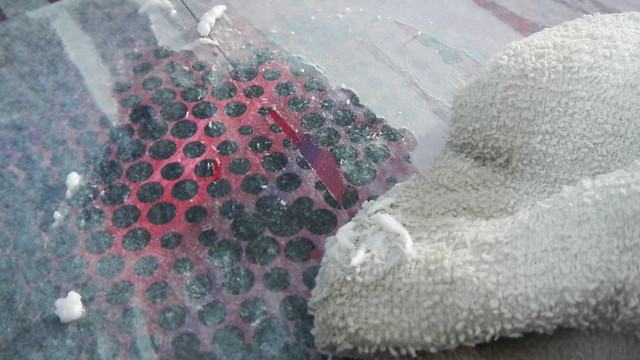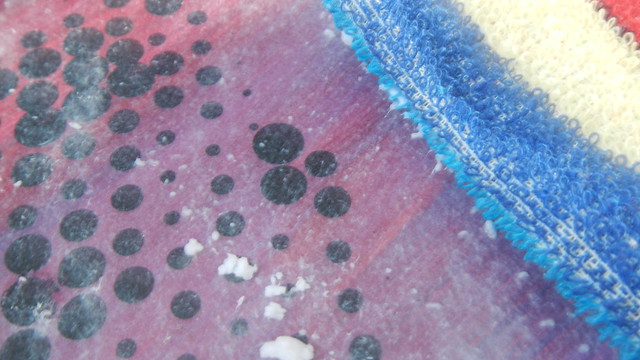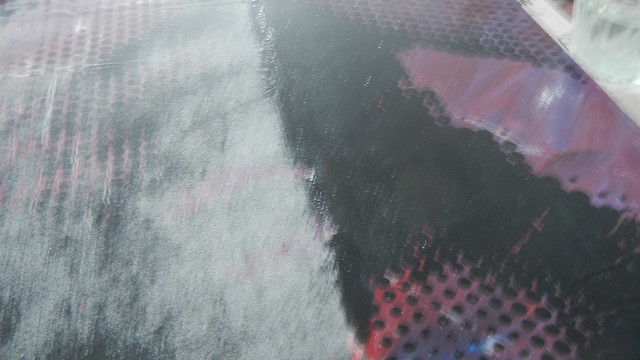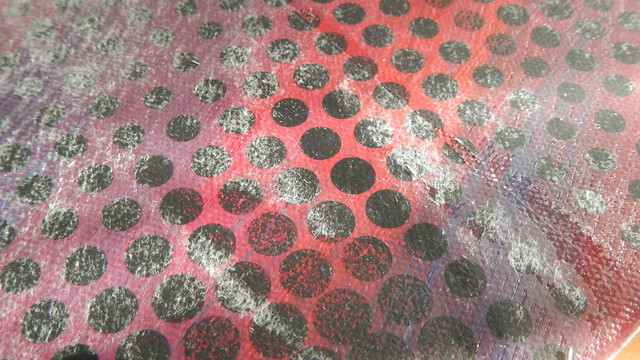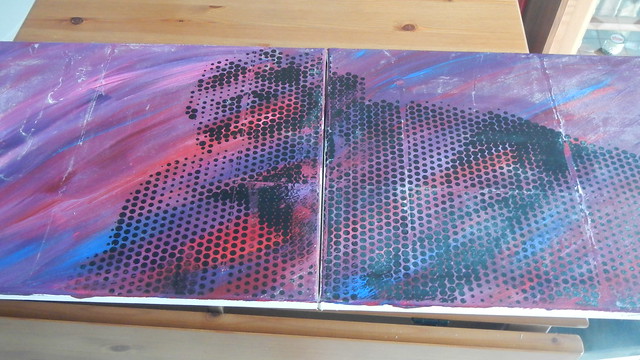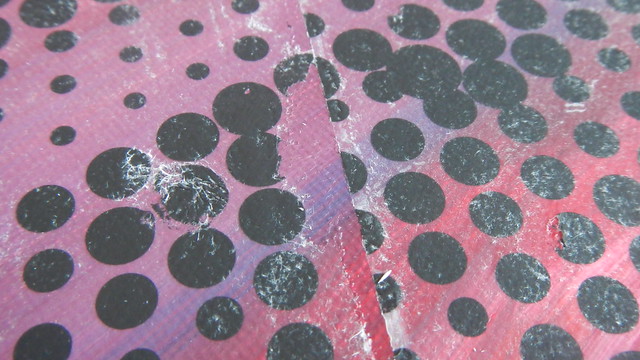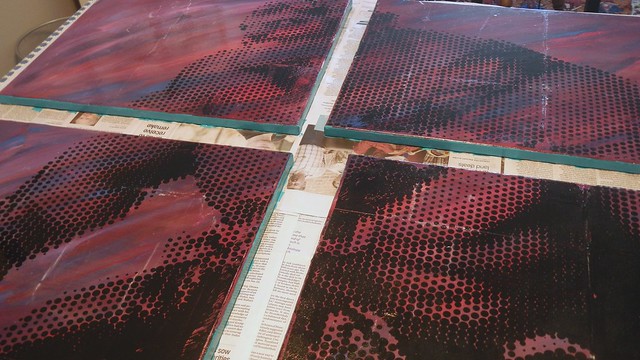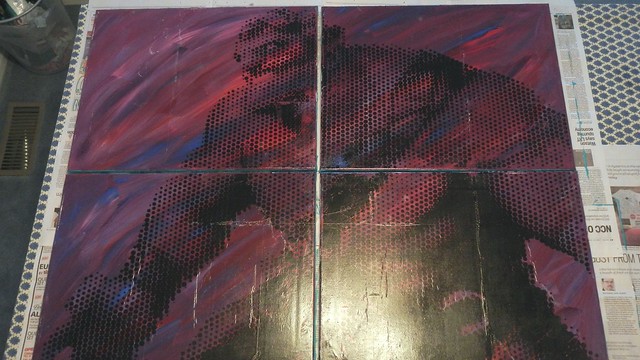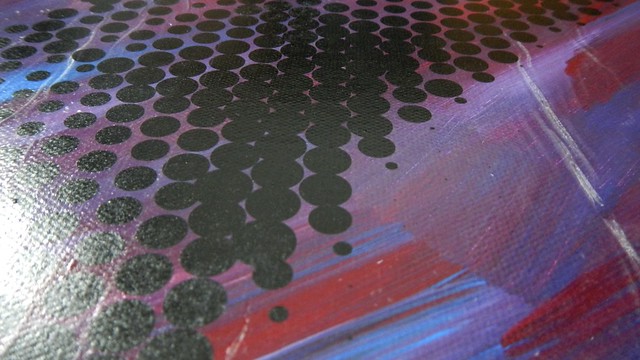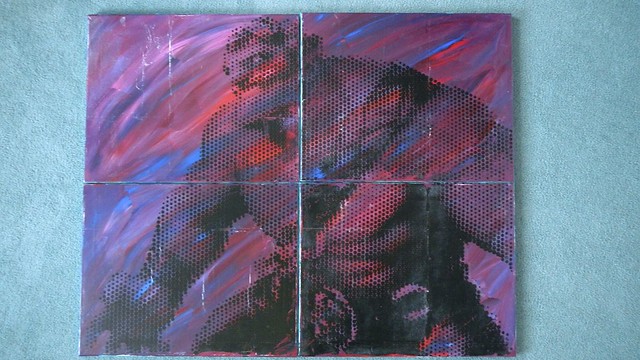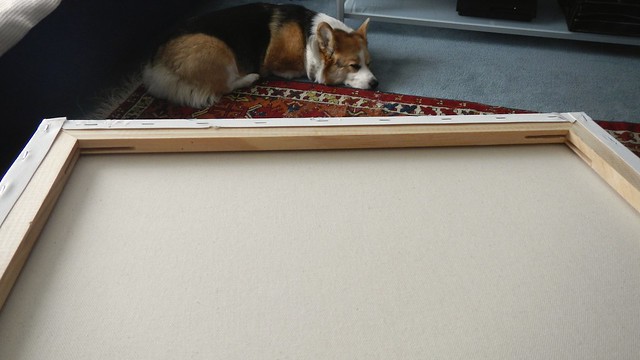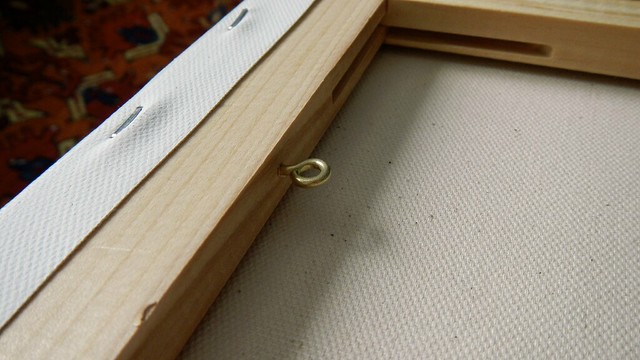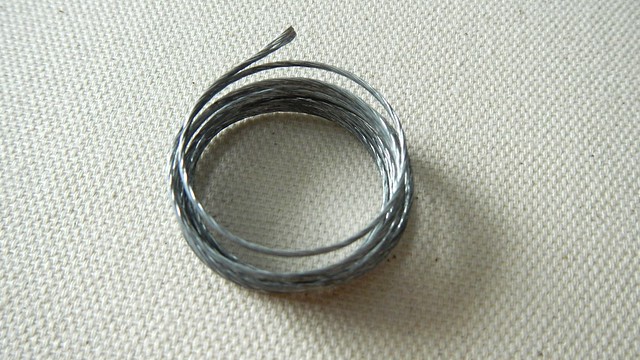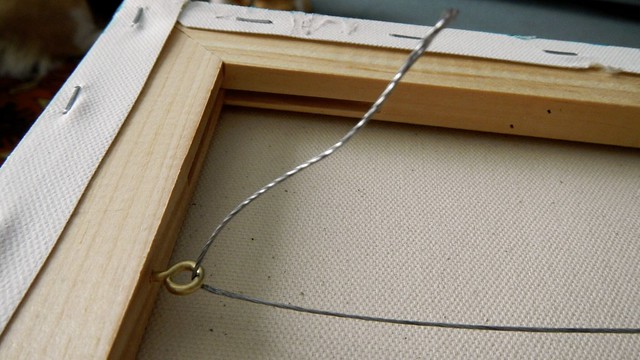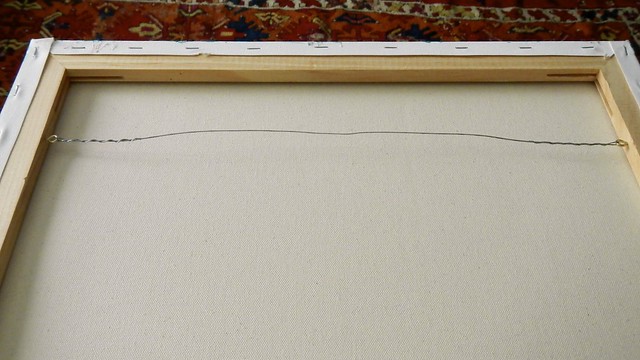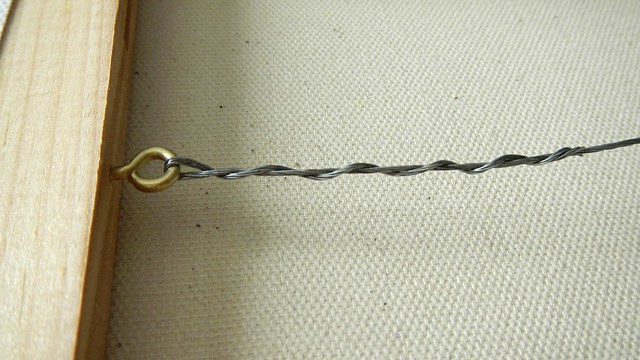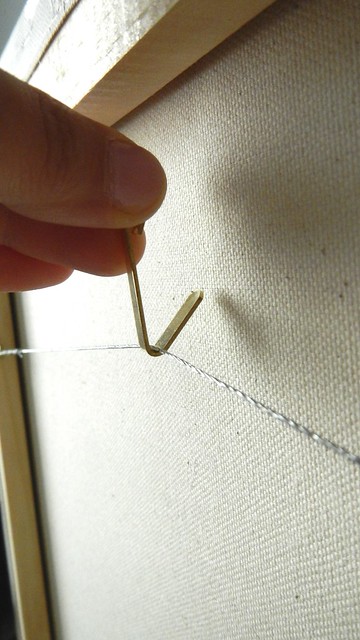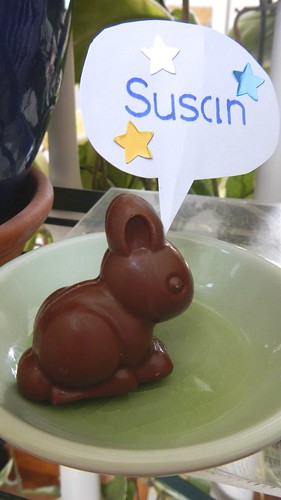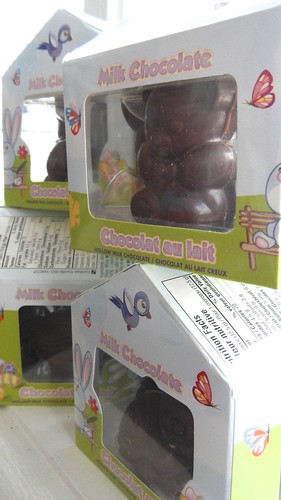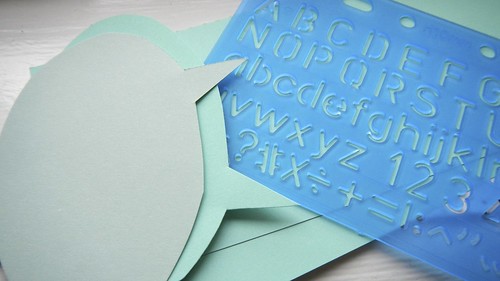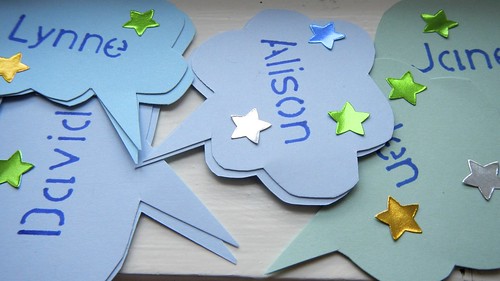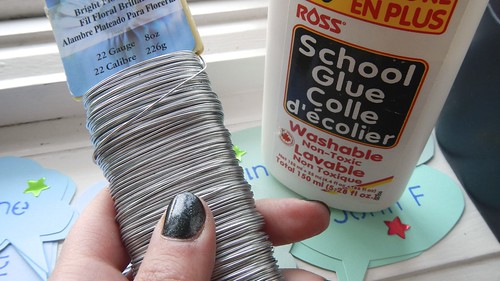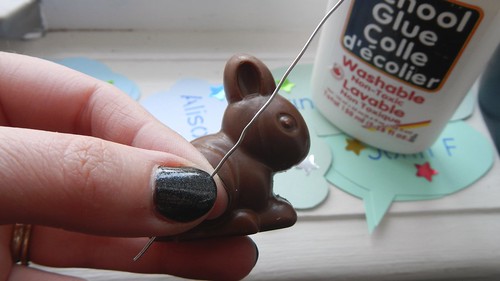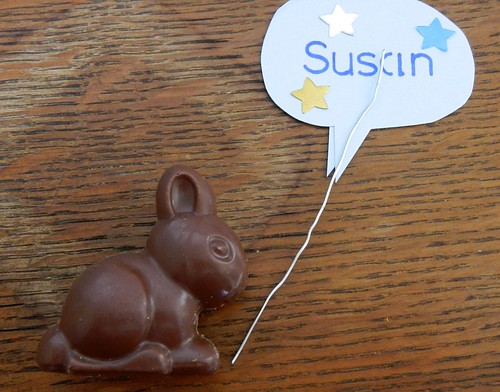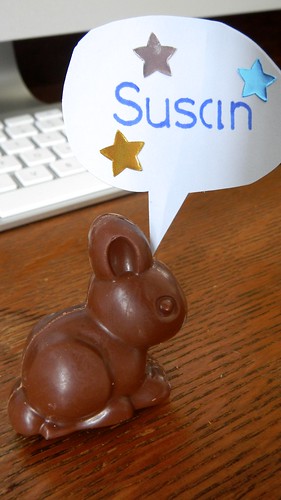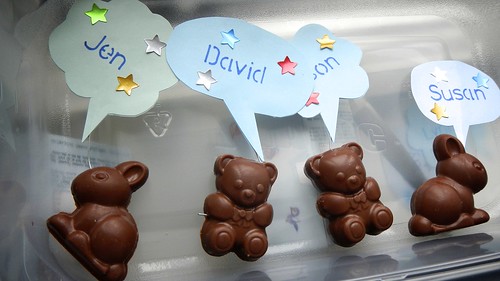
My brother Krystopf travels frequently for his job. Most of the time it’s to Brussels, where he has fully exhausted the entertainment value of the city and now dreads going. He’s also a bit of a disorganized traveler, and there are few countries on this planet that don’t have a little piece of something that he has left behind. Actually, both my brothers are pretty good at this, so maybe Ando will get one of these some time in the future …

This is a travel document holder that I designed myself. It’s made out of a mining resources map of Newfoundland I inherited from the Geography department at MUN, and dates from 1969, so it’s quite old in terms of relevance. I actually inherited three of them, plus a few more resource maps, so I’m sure you’ll be seeing more map-related projects in the future.

My first step in this project was to “antique” the map, using a technique I learned from the good folks at Design*Sponge. So you lay out your map (or whatever it is that you are antiquing), on a workable surface. My map was too big for the table, so I laid it out on some dog towels on the floor.

Brew up a cup of dark coffee and let that cool. You will also need a cup of plain water and a handful of coarse salt. I used the stuff you put in your grinder. And a paintbrush.

When the coffee has cooled sufficiently, dip in your paintbrush and paint a swath of coffee onto your map. Follow that with a dip into the fresh water, just to dilute it a bit. Paint at random, and allow some puddling.

Now, while that area is still wet, sprinkle a few grains of salt into the wet areas. The salt will help to dry up the puddles.

Continue this way, randomly swiping your paintbrush wherever you like, sprinkling salt as you go, until you’ve got something you like. Leave that to dry overnight.

Now brush off all the particles of salt. You may find that it’s crystallized in the darker spots, and you can brush that away as well if you use a stiff brush. Or you can keep it that way, it’s up to you. I think the little perfect squares of salt look kind of neat, but they won’t adhere well to my contact paper so I gotta get rid of them.


Now we’re going to measure out our pieces. A pencil and a ruler might help, obviously. I have a plan as to how this is going to happen. When I make plans for stuff I usually construct a mockup on scrap paper, writing in all the measurements and such, and notes as to where I’m putting what.

On the inside we have a passport pocket, a notepad, and a wee pouch for small things that folds over itself to keep everything in place.

On the other side of that pocket are a series of slots for odds and ends.

So now we’re ready for cutting. I used my rotary cutter and cutting mat for this but you can use scissors or whatever works for you. Cut two pieces out of the map that are 18″ x 9 1/2″ (or whatever works for you). These are the inside and outside of the document holder, and will be folded in half. Remember that one end folds over itself and fastens with velcro. That fold-over flap is 3″, making the folder 7 1/2″ wide by 9 1/2″ tall, the perfect size to slip into a laptop or even a netbook or tablet sleeve.

This is the two pieces folded together. You may need to trim the inside piece a bit to get the edges to match up, simply due to the bulk of the mapping paper.

Here is the piece I cut out for the inside pocket. It is 8 1/2″ tall and 16″ wide. Then I folded it in half with the map facing outwards and folded in the open edges by one inch, and then over itself again by another inch. That double fold will ensure that the contents of the pocket won’t slide out.

So the folded pocket is 8 1/2″ tall and 6″ wide, a good fit for the inside of the folder.

On the inside left cover we are going to have a space to store a passport, as well as a stash of scrap note paper for writing things down.

I cut the scrap paper to be all the same size and a proportional fit for the folder, 3″ x 5″. A passport is 3 1/2″ x 5″, so the lengths matched.

Originally, I was going to construct all these slots and pockets by cutting slits in the structure of the folder cover and inserting paper pockets inside. But then I changed my mind. I decided it would cut down on bulk, streamline and strengthen the design, and make things easier to see if I used the contact paper itself to make the pockets I needed. Then the clear nature of the plastic would mean you could see your stuff, as well as the details of the map underneath it. It makes things a little trickier to put together but I think the end result is less bulky and complicated.
Now for the contact paper. This is the stuff they use to cover shelves and things. You can pick it up at any hardware store. Because I don’t have a car and Newfoundlanders don’t like their contact paper to be clear, I had to get mine online. But it’s a common thing.
First we do the inside cover. Cut a piece of contact paper the exact size of the inside cover (18″ x 9 1/2″). Before you take off the adhesive backing, we’re going to plan out where all our slots go and how we’re going to put them together. Please note here that I totally planned out my design backwards, and in the end had to change the way that the document folder opened. So make sure you remember that the design you put on your contact paper will be reversed when you stick it down onto the map.

For the inside left cover, with the note pages and the passport, …

For the inside right cover, with the slots for receipts and such, we’re going to do more or less the same thing, except these slots are going to overlap, so sticking things gets a little complicated …

So then I cut slashes in the contact paper where I wanted documents to stick through.

Then I carefully cut through just the backing paper to peel away areas I wanted exposed.

Then I cut another piece of contact paper to fit on that exposed piece.

And stuck it down.

Now that’s going to form the basis of your pocket. But we need another piece of contact paper on the inside, to go against the map. So I cut out a bit more of the contact backing sheet, then cut a larger piece of contact paper and placed it, sticky side up, on top of that, so when I laid it all out it would adhere to the map.

The slots were a bit trickier, because I had to go through the same process as for the above pockets, but I also had to remember that they overlapped, which meant I had to start with the bottom one first.

It took a while. You can’t really see all the individual layers here, but just know that it’s four separate pockets.

Then I oh-so-carefully stuck it down on the inside cover. You can see it here, with pieces of paper in the little slots, to show you how it goes. And yes, it’s totally backwards.

Onward. Let’s put together the inside pouch.
Cut the contact paper to be 8 3/4″ wide and 18″ long. The extra 1/8″ on the width will leave the contact paper adhering to itself. The extra 1″ on either side will fold over the top edges of the pouch, protecting them.

Carefully adhere the contact paper to the pouch, making sure the edges line up and fold down the ends over the opening to protect the paper inside.

I used red embroidery floss, which I waxed, to sew up the outside edges of the pouch. I liked the colour contrast with the blue of the water.

I cut some squares out of adhesive velcro and stuck them to the second fold of the pouch so it would stay closed.


Then I sewed the pouch onto the inside of the cover. You could leave this until last, but I didn’t want my stitches to show on the outside.


That means that our next step is to stick the two cover pieces together. You don’t really need glue, or a lot of it, just something to stick them together so they’re not sliding all over the place while you’re applying contact paper to the whole thing. I used a few pieces of double-sided tape, to avoid wrinkles. The thing is wrinkly enough.

Cut the outside contact sheet larger on all sides by 1/2″ (so, 19″ x 10 1/2″). Lay the cover piece in the centre of the contact sheet. Mitre and trim the corners as you fold it over to protect the edges. My original plan was to border the edges with bias binding and sew it all around but I changed my mind. I like the clear fold-over of the contact paper better. Then you just have to stick on some more velcro pieces to keep the folder closed and you’re all set.


 EUREKA? Paper. Water. Glass. Adhesion.
EUREKA? Paper. Water. Glass. Adhesion. I can see myself wetting tissue paper with LongJohn in future years and creating a winter snowscape on our front window …
I can see myself wetting tissue paper with LongJohn in future years and creating a winter snowscape on our front window …


